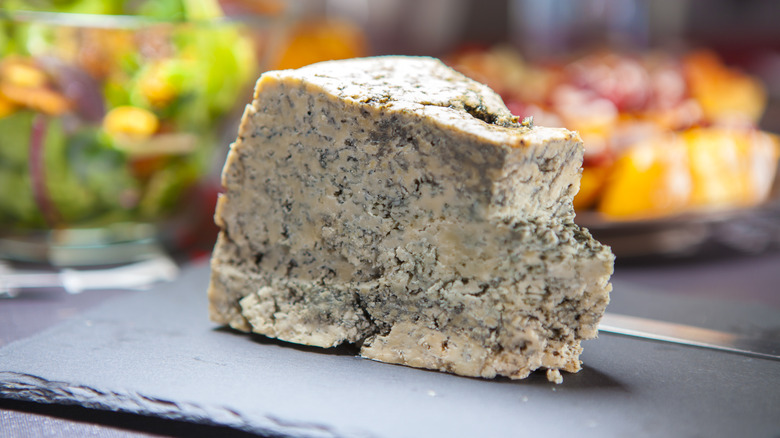Why The Sniff Test Isn't The Most Reliable Way To Tell If Cheese Has Gone Bad
Depending on your health and sensitivities, eating cheese that has gone bad can produce a range of symptoms. If you have a healthy immune system and no mold allergies, you might experience mild indigestion. Others may not be so lucky. Spoiled cheese may cause severe food poisoning or allergic reactions with symptoms that include fever and chills and require immediate medical attention. Eating bad cheese is not worth the risk, so what's the best way to tell if it should be tossed?
Some claim the best way to tell if cheese has gone bad is by smelling it. However, that doesn't work for everyone, And it's not always the most reliable method, either. Especially if you aren't sure what different cheeses should smell like. For example, as cheese ages, it produces ammonia. When you unwrap cheese that you haven't opened for a few days, that ammonia smell can build up and waft into your nostrils, making you think it's gone bad. Also, there are many "stinky" cheeses, but they smell bad when they are fresh. If you are unfamiliar with how they are supposed to smell, you might throw them out prematurely. Worse, you could think they are okay (when they are not) and eat them.
Most reliable way to tell if cheese has gone bad
While a sniff test might not be the most reliable way to tell if your cheese has gone bad, that doesn't mean you should fully discount offensive odors. The best way to tell if your cheese is safe to eat is to inspect it with both your nose and your other senses. For instance, you can use your eyes. Some discoloration, such as white specks, may enhance the flavor of your cheese. However, splotchy, unexpected colors, like blues and reds, can indicate that your cheese is not safe to eat.
Another way to tell if your cheese has gone bad is to test if it has a slimy exterior. A slimy texture is a sign that undesirable bacteria are growing on the surface. Bacteria can also cause a deacidification that creates a gritty texture. While grittiness isn't always a bad thing, when combined with a slimy feel, it's best to discard.
It is important to use all available clues when evaluating cheese. The smell alone isn't the most reliable method, but when you combine that with a visual inspection and a quick check of the exterior texture, you will get a good indication of how safe your cheese is to eat.

